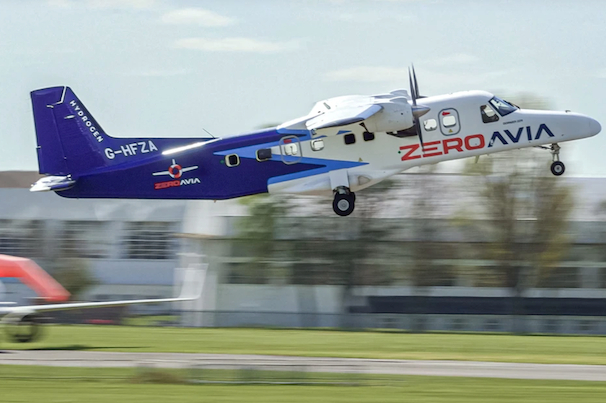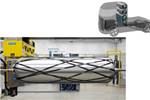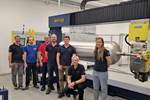ZeroAvia partners with Verne to explore CcH2 storage
Having recently demonstrated a Type III CcH2 system, Verne will work with ZeroAvia to assess the benefits of scaling CcH2 storage and refueling infrastructure at airports globally.
Share
Read Next

Photo Credit: ZeroAvia
(Hollister, Calif., U.S.) and Verne (San Francisco, Calif., U.S.) have signed a memorandum of understanding (MOU) to jointly evaluate the opportunities for using cryo-compressed hydrogen (CcH2) onboard aircraft and for conducting CcH2 refueling from gaseous hydrogen (GH2) and liquid hydrogen (LH2) sources.
Verne is a hydrogen storage and refueling technology startup focused on solutions using CcH2 for heavy-duty sectors. CcH2 stores GH2 at cold temperatures, increasing the energy density of the fuel, which could enable a longer range compared to GH2-powered aircraft. Recently, the company, alongside Lawrence Livermore National Laboratory (LLNL, Calif., U.S.), demonstrated a single CcH2 system — a Type III carbon fiber/epoxy-overwrapped aluminum prototype — with a capacity of 29 kilograms, close to three times greater capacity than previously known examples.
According to an analysis by Verne, CcH2 can achieve 40% greater usable hydrogen density than LH2 and 200% greater usable hydrogen density than 350-bar GH2. Additionally, the application of CcH2 promises to significantly reduce cost of densification and refueling time, increase dormancy time relative to LH2 systems, and potentially eliminate venting for pressure management.
Together, ZeroAvia and Verne will assess the potential benefits of scaling CcH2 storage and refueling infrastructure at airports across the world, as hydrogen-electric propulsion scales to support larger and larger aircraft. The two companies will also work together to develop a model for initial airport locations in California.
Verne has already developed large hydrogen storage systems exhibiting 4 megawatt-hours of storage. The company has also received federal grants for the development of its technology, including from ARPA-E. Verne is backed by Amazon’s Climate Pledge Fund, Caterpillar Venture Capital, Collaborative Fund and other investors. As well as rapid work to develop its propulsion technology, ZeroAvia has been active in demonstrating hydrogen airport infrastructure.
“With our engines just a few years from flying passengers and cargo, it is important for us that we find the optimal solutions to support airport hydrogen ecosystems,” Sergey Kiselev, chief business officer, ZeroAvia, reiterates. “Increasing storage capacity and refueling speed using novel technologies is an important avenue for scaling up hydrogen aviation, and we’re delighted to work with Verne on assessing the role of cryo-compressed hydrogen.”
ZeroAvia is already flight testing a prototype of its ZA600 hydrogen-electric engine aboard a Dornier 228 aircraft at its U.K. base, and is working to retrofit a prototype of its ZA2000 to a 76-seat Dash 8 400 in the U.S.
Related Content
-
Automated robotic NDT enhances capabilities for composites
Kineco Kaman Composites India uses a bespoke Fill Accubot ultrasonic testing system to boost inspection efficiency and productivity.
-
First Airbus A350 crash confirmed in Haneda
Shortly after touch-down, a JAL A350-900 aircraft recently collided with a De Havilland Canada Dash 8. Exact circumstances are still unknown.
-
Plant tour: Aernnova Composites, Toledo and Illescas, Spain
RTM and ATL/AFP high-rate production sites feature this composites and engineering leader’s continued push for excellence and innovation for future airframes.






